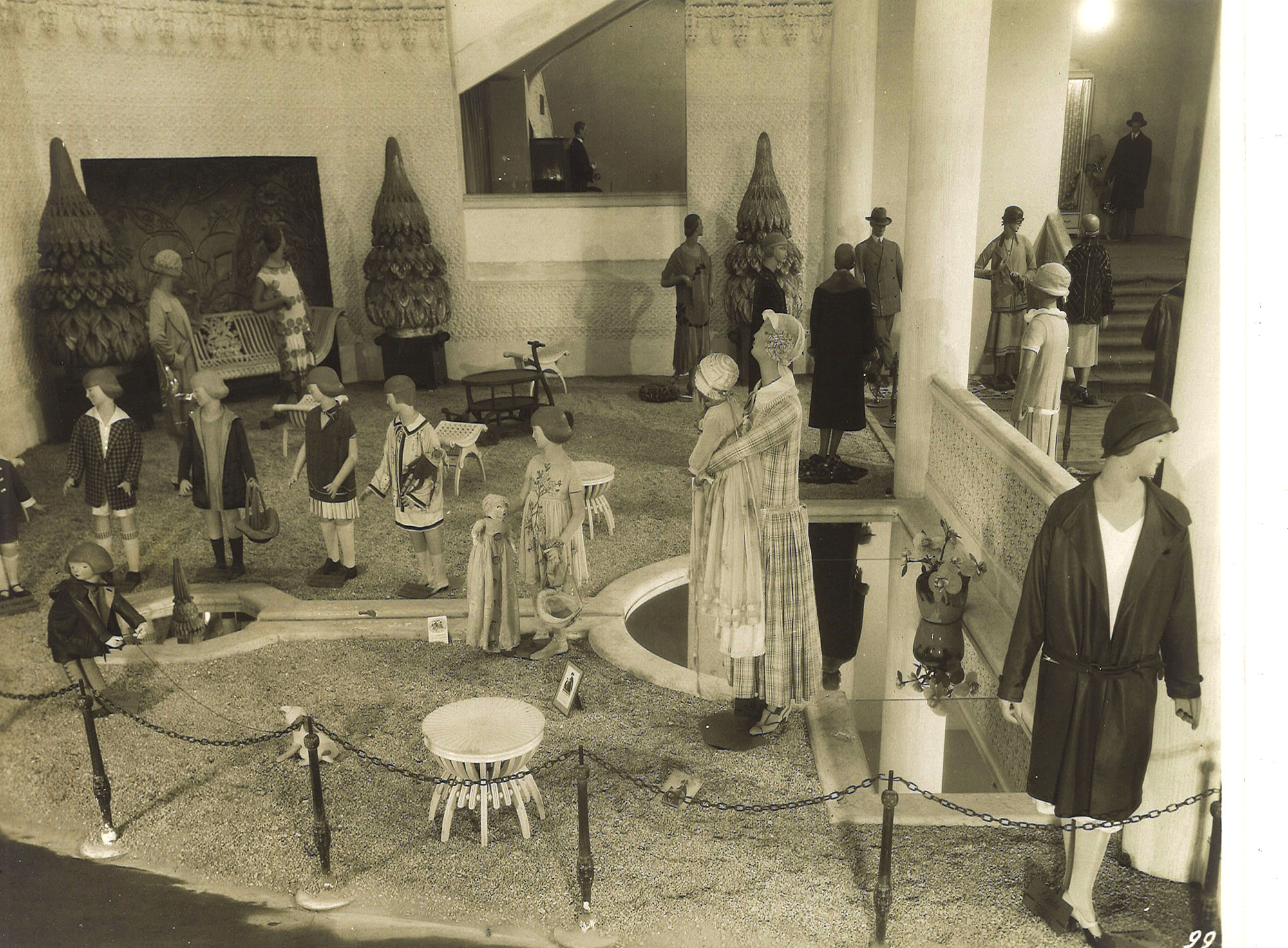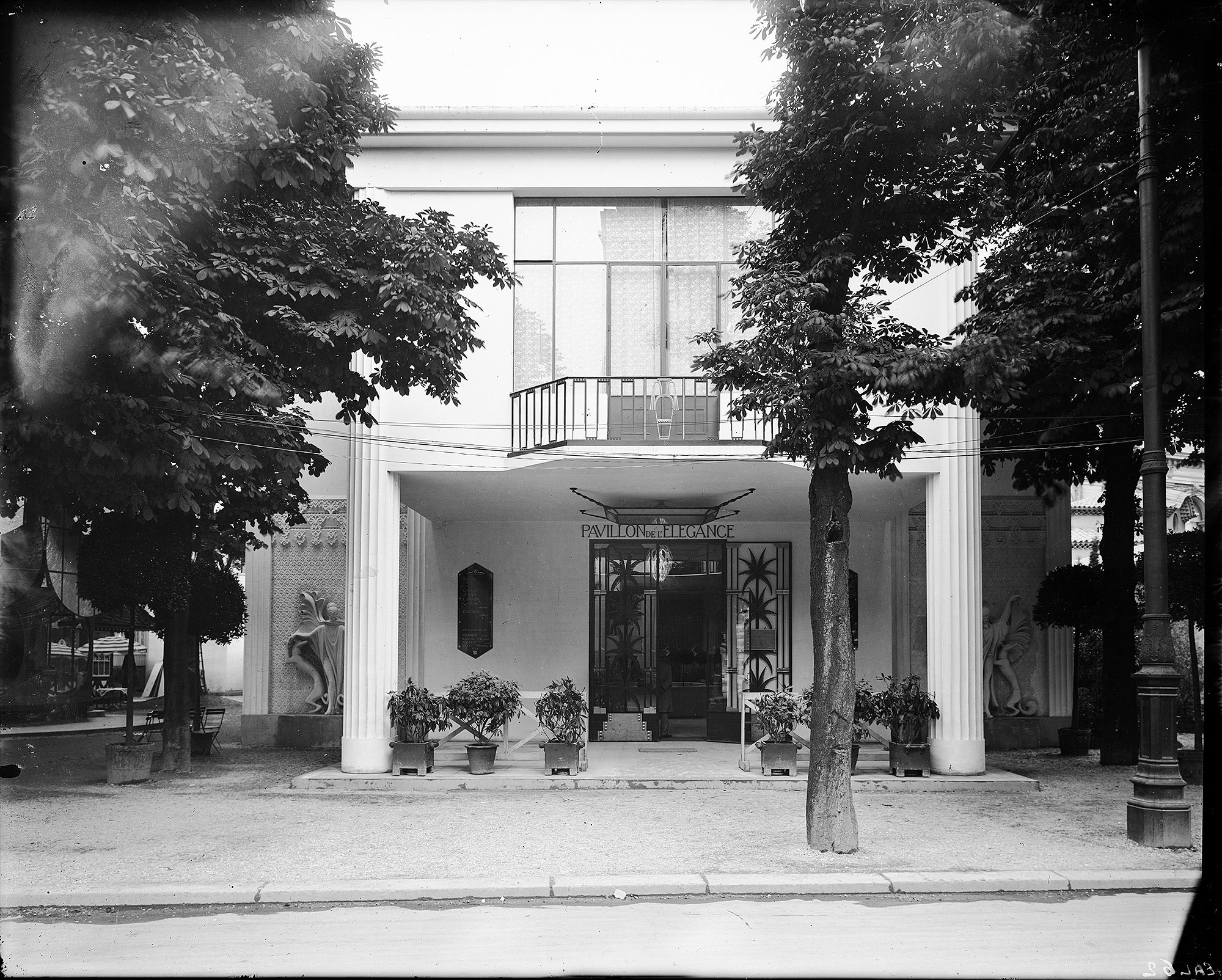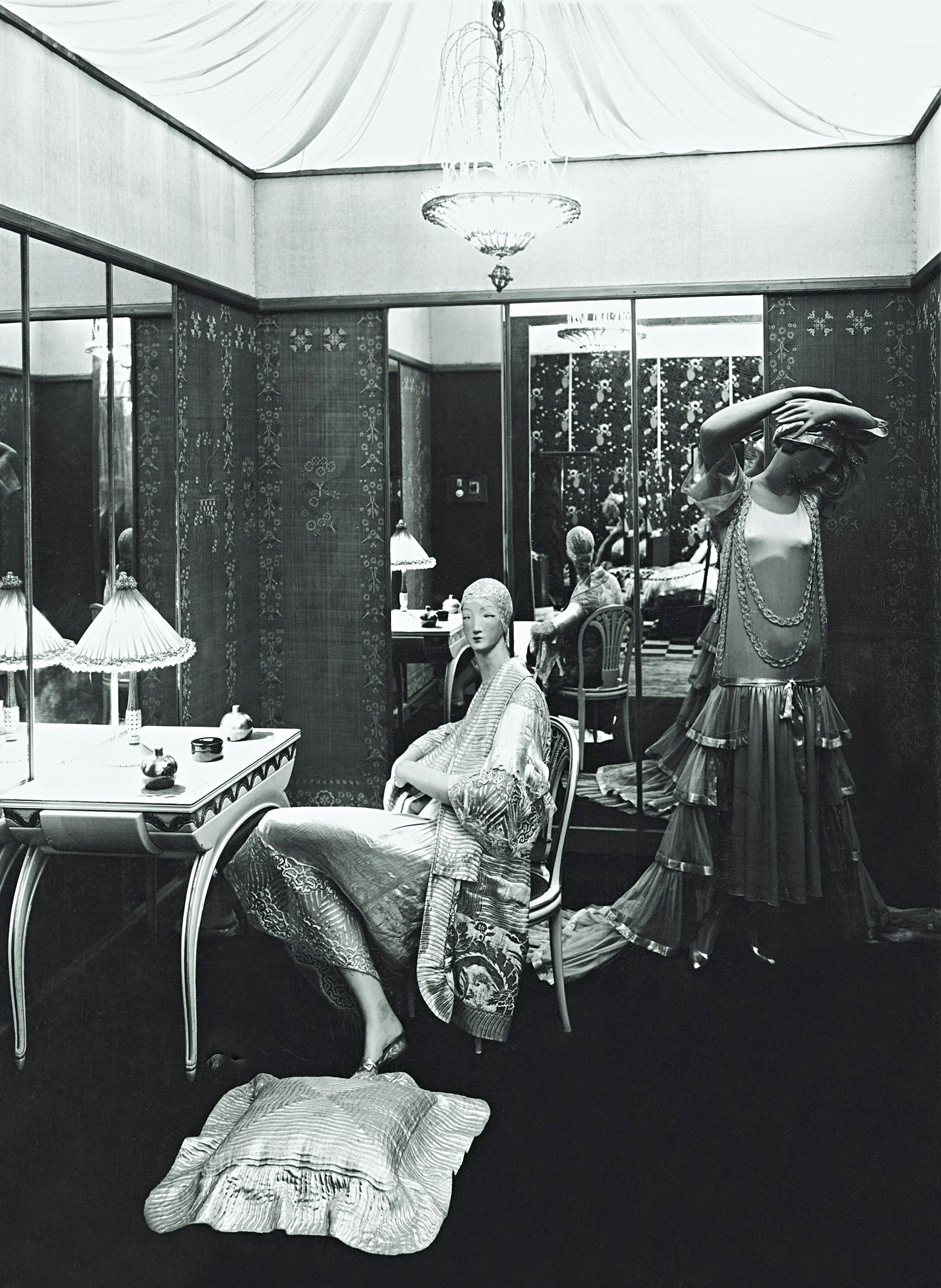The International Exposition of Modern Decorative and Industrial Arts, Paris 1925
The International Exposition of Modern Decorative and Industrial Arts was held in Paris, on the Esplanade des Invalides, along both banks of the Seine and in and around the Grand Palais, from April to November 1925. As a token of its importance, two major sites were devoted to fashion: the Grand Palais and the Pavillon de l’Élégance on the Cours-la-Reine. As chairwoman of both the international awards jury and Classe 20 (Clothing), Jeanne Lanvin played a key role. She was also in charge of selecting exhibitors and the exhibition’s architectural décor. Intent on highlighting the unity of French production, she entrusted the design of the Classe 20 stands in the Grand Palais and the Pavillon de l’Élégance to two close acquaintances, the architect Robert Fournez and the interior decorator Armand-Albert Rateau.
Their design for the Grand Palais was inspired by a luxury spa hotel. Jeanne Lanvin exhibited there with seventy couturiers selected for their “modern” creations, on either side of the “Allée de la Parure.”
On the Cours-la-Reine, the Pavillon de l’Élégance, ideally located next to the exhibition’s main entrance, was reserved for the haute couture elite. Echoing the Classe 20 section in the Grand Palais, four prestigious houses, Lanvin, Callot, Jenny and Worth, exhibited there with the jeweller Cartier. The building, designed by Fournez and decorated and furnished by Rateau, resembled a private residence. Its uncluttered architecture emphasised the sculptures on the facade by Paul Plumet, Rateau’s assistant, and the exterior and interior ironwork by Baguès Frères, the firm that produced Rateau’s bronze objects (lighting, furniture, etc.).
Another example of Jeanne Lanvin and Armand-Albert Rateau’s collaboration, the Actress’s Dressing Room in Classe 25 (Theatre), was located on the first floor of the Grand Palais. Although small in size, it reflected Jeanne Lanvin’s passion for the theatre, both as an entertainment and as an aspect of her creation. Like many couturiers, she dressed the actresses of her time both on and off the stage, including her friends Jane Renouardt and Yvonne Printemps. The Théâtre Daunou in Paris, owned by Jane Renouardt and Jacques Wittouck and decorated by Lanvin Décoration in 1921, is one of the emblematic examples of the complicity between the worlds of haute couture, the theatre and interior decoration.
Allée de la Parure (Classe 20), Grand Palais

The “garden” of the Allée de la Parure

The mannequins are by André Vigneau for Siegel.
-
The garden of the costume avenue
The mannequins are by André Vigneau for Siegel and wear clothes by Jeanne Lanvin.
Musée des Arts décoratifs, photographs by REP, Jean Collas collection
The Pavillon de l’Élégance, Cours-la-Reine

Paul Plumet, similar to those installed by Rateau in the hall of the Lanvin Decoration boutique, 15 rue du Faubourg Saint-Honoré
-
The Pavillion of Elegance
View of the interior taken from the first floor. On the ground floor the visitor was welcomed by four Siegel mannequins representing dancers and wearing models by four couturiers, Jenny, Callot Sisters, Jeanne Lanvin and Worth.
Musée des Arts décoratifs, photograph by REP, Jean Colas collection
-
The Pavillion of Elegance
View of the interior : the wrought iron balustrade and the silvered bronze chandeliers are by Baguès Frères. In the centre the boutique windows of the Maison Cartier can be seen.
Musée des Arts décoratifs, photograph by REP, Jean Collas collection
-
Salon of the Maison Lanvin – Pavillion of Elegance
The mannequins are by André Vigneau for Siegel
The furniture and the light fittings by Rateau are idntical to those in the bedroom of the couturier, 16 rue Barbet-de-JouyMusée des Arts décoratifs, photographs by REP, Jean Colas collection
-
Dressing table of Jeanne Lanvin’s bedroom
ARMAND-ALBERT RATEAU (1882-1938), decorator
BAGUES FRERES founder
Paris, 1924
Cast bronze with an antique green patina, balck marble with white marble edging,
drawer knob in ivory and bronze, double sided, moveable mirror with 3 lampsinv. 39907
-
Pair of standard lamps from the bedroom of Jeanne Lanvin
ARMAND-ALBERT RATEAU (1882-1938), decorator
BAGUES FRERES founder
Paris, circa 1925
cast bronze with antique green patina, alabasterinv. 39910 A et B

The chaise longue, the coffee table and the light fittings are identical to those in the town house of Jeanne Lanvin, 16, rue Barbet-de-Jouy.
-
Chaise longue
ARMAND-ALBERT RATEAU (1882-1938), decorator
BAGUES FRERES founder
Paris, circa 1925
cast bronze with an antique green patina. This model, originally created for the Duchess d’Albe in 1921, stood on the terrace adjoining the boudoir of Jeanne Lanvininv. 39902
-
Coffee table
ALBERT-ARMAND RATEAU (1882-1938), decorator
BAGUES FRERES, founder
Paris, circa 1925
Cast bronze with an antique green patina, black and white marble
There was an identical model in the bedroom of Jeanne Lanvininv. 39906
